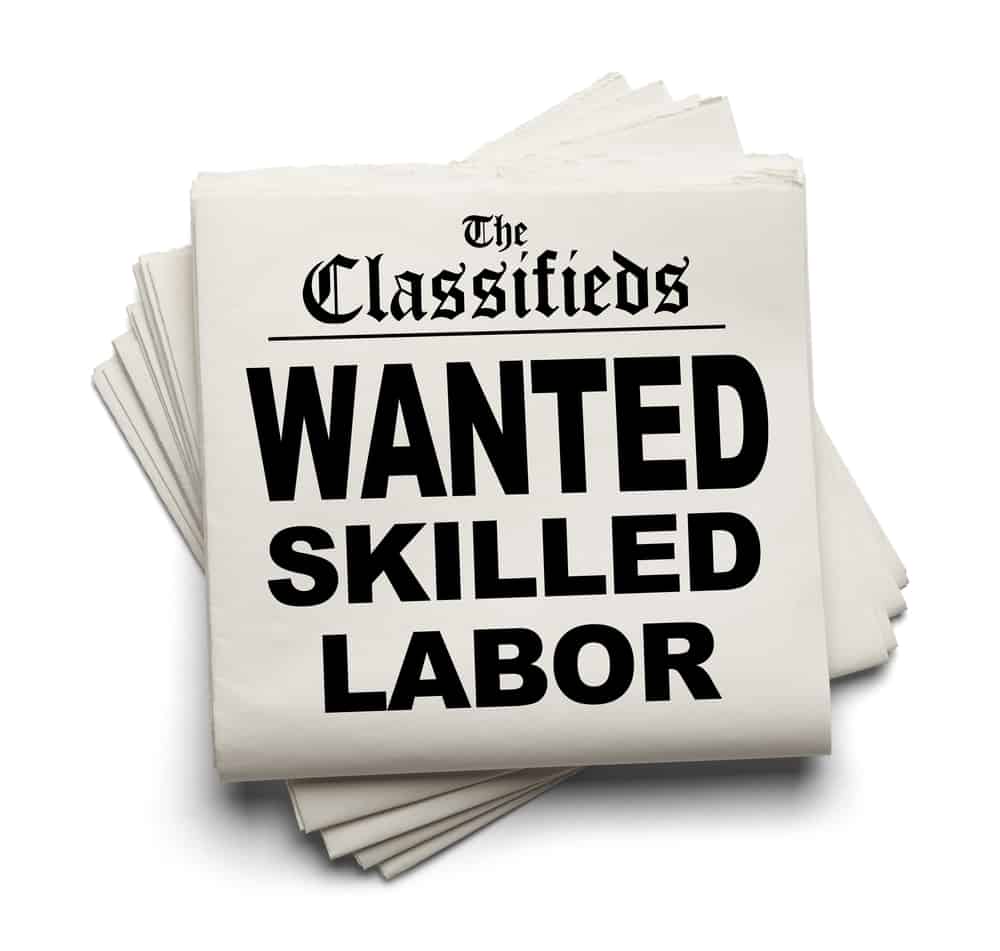
A popular series entitled “The Men Who Built America” airs periodically on the History Channel. Its episodes laud the influence of industrial pioneers like John Rockefeller, J. P. Morgan, Andrew Carnegie, Cornelius Vanderbilt, and Henry Ford who helped transform the US from a mostly agrarian country into an industrial giant on the world stage. While these visionaries undoubtedly deserve recognition, it might be more accurate to say that America was built by countless unnamed laborers, both skilled and unskilled.
Of the unsung skilled laborers, welders stand out because the growth of the country would not have been possible if they hadn’t built and assembled metal structures, bridges, automobiles, aircraft, and factories. And the need for these professionals has continued right up to the present day. Yet, the number of people who choose a welding career has not kept pace, and we are facing a welder shortage in 2020. Let’s explore why this discrepancy exists and, more importantly, discuss ways to remedy this untenable situation.
Welder Shortage 2020: Why Does it Exist?
While campaigning for the presidency in 2015, Senator Marco Rubio said, “We need more welders and less philosophers.” Although the senator received some flack over these comments, he actually made a good point. With all due respect to philosophers, a healthy economy requires workers of all types and is most productive when the demand for workers closely matches the available talent. Unfortunately, this balance does not currently exist for the welding industry.
Not only is there a shortage of hundreds of thousands of welders today, but some industry estimates suggest that by 2023 we’ll need around 375,000 more welders than will be available.
It would be virtually impossible to enumerate all of the reasons for the current welder shortage; however, the following are likely significant causes.
Causes of Welder Shortage 2020
- Growth in welding applications
The breadth of welding applications is expanding. For example, welding is a primary requirement in industrial construction, with welding applications extending to the equipment and piping within factories and plants. This includes sanitary tube welding for food production and biopharmaceuticals. Additionally, continued growth in the automobile, power generation, and aviation[link to “Meeting the Challenges of Aviation Welding”] industries—aided by the renewed interest and commercialization of space travel—strengthens the demand.
- Experienced welders advancing and/or retiring
It takes years of experience to become a highly-skilled welder. As some of these welders advance into other occupations or leave the workforce, welders that should fill their positions are unavailable.
- The trend away from manual labor career choices
Some observers think that millenials are not attracted to trades as career path options. A growing emphasis on education and the attainment of higher-level degrees may contribute to this trend. Additionally, there is a misconception that a career in welding does not offer opportunities for advancement.
The demand for welders is outpacing the number of new welders entering the industry. If local workers cannot be found, then options to close the gap are limited. Fortunately, actions can be taken to stem the tide of the welder shortage.
Solutions for the Welder Shortage
Since there is not a concerted industry effort to encourage careers in welding, the onus for addressing the welder shortage of 2020 falls on the following groups: companies that employ welders and utilize welding services; educational institutions; and organizations that provide training and certifications. Some suggestions on how to address the welder shortage are described below.
Effective Recruitment and Training
Employers and educators should focus on optimizing recruitment strategies. For instance, employers can broaden the search radius beyond their city, state, and even region of the country. The internet provides an efficient way to extend recruitment through announcements and job board postings. Companies can also offer incentives that cover training costs and relocation assistance.
Trade schools, community colleges, and universities can enact campaigns to inform potential students about career opportunities in the welding industry. Additionally, schools can partner with companies to offer training and certification programs.
Accentuate Advanced Technologies
We shouldn’t ignore the fact that millennials and Gen Zers are exposed to technology early in life. As a result, young people are often more inclined to work with computers or other technological devices instead of working with their hands. Therefore, advanced welding technologies—such as orbital welding that utilizes remote control units and computer vision—should be highlighted. Additionally, experienced welders who become supervisors, project managers, trainers, and instructors can mentor less-experienced welders and show them the many opportunities for advancement in the industry.
At Arc Machines, Inc., we strive to continually improve the quality of welding production performed in the field by providing high-quality automated orbital GTAW welding equipment. We support your implementation with expertise, training, and service to ensure that you can fully leverage this technology at virtually any welding experience level. For inquiries regarding products, contact sales@arcmachines.com. For service inquiries, contact service@arcmachines.com. Arc Machines welcomes the opportunity to help companies address the welder shortage in 2020. Contact us to arrange a meeting.




